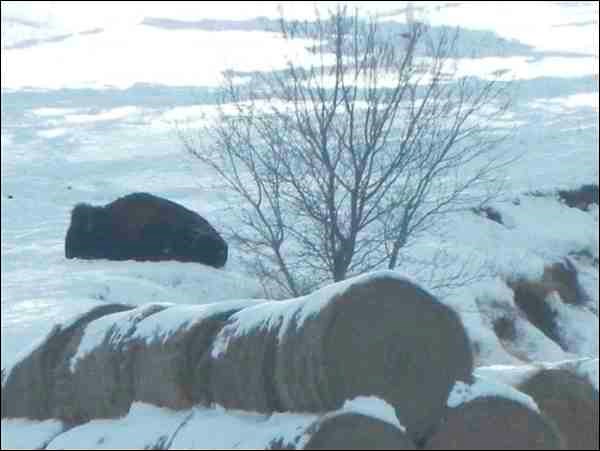Joe Gerein and wife Doris farm east of Unity. Gerein always had a mixed farm, running cattle as well as growing grain. In 1991, he decided to make the switch from cattle to elk, believing the elk would be less work.
Indeed, the elk are easier to look after, he says. And initially he saw good monetary returns from selling antlers for use by the Koreans in medicines, but chronic wasting disease, first found in a captive herd animal in Saskatchewan in 1996, in Gerein's words, "totally did the elk industry in." Eighty per cent of the market was lost when, as a result, the Koreans closed their border to elk antlers from Western Canada.
Although for a time people involved in the industry thought the Koreans would re-open the border, a later outbreak of CWD near Prince Albert killed that hope. Many elk farmers got out of the industry completely as there was simply no longer any market for elk. Gerein said Kramer Auctions was charging a minimum of $50 to sell an animal and elk were going for $35 a head.
Gerein is slowly getting out of elk himself. From a herd that once numbered 400, he is down to only 18 animals. Many of his animals were butchered and donated to food banks, including those in Regina, Saskatoon and North Battleford. Some he got rid of by selling them for hunting and moving them to hunt farms.
Even when the market was good, there were risks. One year the elk lost their antlers early and then the weather changed for the worse. When it reaches -30 C, the new antlers froze, meaning no antlers the next year.
On the other hand, the elk have been less work than cattle. In particular, they don't have to be supervised or assisted during calving. Nor do they need to be brought in for the winter. Cattle, if they lay down in the snow, will get wet. Elk have two layers of hair so the underneath always stays dry.
Reflecting on other positives, Gerein spoke about some of the Koreans and hunters he has met. "If it hadn't been for the elk, we would have never met those guys."
He had installed large freezers in his shops in order to store antlers prior to selling them. He met other elk farmers who used his antler storage facilities. Many of the "tremendous number of people" Gerein encountered through the elk industry have become lifelong friends.
Gerein feels elk farmers, in general, were not properly treated by government. He said those who actually had a case of CWD on their farms got bailed out, receiving $4,000 a head while the rest were left to fend for themselves. Of the 400-some elk farmers in Saskatchewan, over 50 per cent lost their farms. "So many good people got hurt."
Everybody who travels Highway 14 between Unity and Wilkie will have noticed the Gerein farm at the Swarthmore Road corner. In the heavily fenced fields west of the farmyard, there are now buffalo as well as elk.
Gerein says they are a good mix and can stay in the same field at any time of the year. He feeds both hay, along with grain in the long troughs. While you can feed buffalo almost anything, elk are a little fussier, he says. Buffalo are easier to keep than either elk or cattle, but good fences and a proper handling system are necessary. The buffalo never calve until May.
Both species have to be respected. "Don't ever turn your back on them," Gerein says. "They are real tough."
Buffalo may look large and cumbersome but they can turn on a dime, running full-bore, stopping, turning and off at full speed again in no time at all. When in the squeeze, a grouchy elk will settle down if left for a few moments; a grouchy buffalo will not.
Respect for the animals is especially important when they have their offspring. As for coyotes, if one finds its way into the enclosure, he says, "I can guarantee you it won't come out."
Gerein first bought buffalo in about 2000 but is phasing them out as well. He first downsized his herd of 100 animals when the market dropped a few years ago, sending 20 cows to the food banks in Saskatoon, Regina and North Battleford. The price was very good a year ago and although it has decreased a little since then, it is "pretty good yet."
However, Gerein is down to 35 animals and will gradually continue with the phasing-out as, at age 75, it's time to cut back on his daily chores.
Overall he's been happy with his experience with the buffalo.
Gerein has farmed his whole life and plans to continue, even without the animal herds. "I'm 75 and I love what I'm doing - that's why I built a new heated shop."



